Did you know that there are over 90 different types of gourd vegetables?
Gourd vegetables, such as cucumbers, pumpkins, melons, and squash, come in an astonishing array of shapes, sizes, and flavors. These versatile vegetables are not only a key ingredient in various cuisines but also offer a range of nutritional benefits.
If you’re curious about the diverse world of gourd vegetables and eager to learn how to incorporate them into your cooking, garden, or creative projects, this article is for you. Join me as we delve into the different varieties of gourd vegetables, explore their culinary applications, and discover fascinating insights about their history and uses.
Key Takeaways:
- There are over 90 different types of gourd vegetables.
- Gourd vegetables are versatile in the kitchen and offer nutritional benefits.
- Exploring gourd varieties can enhance your cooking, gardening, and creative projects.
- Gourd vegetables have a rich history and cultural significance.
- Growing and caring for gourd vegetables requires specific techniques and knowledge.
Understanding Gourd Cross-Pollination
Cross-pollination in gourds is often misunderstood. While it is true that cucurbits, such as zucchinis and watermelons, can cross-pollinate, it can only occur within plants of the same species. Different species of cucurbits, such as zucchini (Cucurbita pepo) and watermelons (Citrullus lanatus), are unlikely to cross-pollinate.
The misconception that planting cucumbers next to squash or melons would result in bad fruit is untrue. Understanding the genetic and pollination processes can help dispel these misconceptions and allow gardeners to grow different gourd vegetables without worrying about cross-pollination issues.
| Gourd Species | Common Name |
|---|---|
| Cucurbita | Ornamental varieties, culinary uses |
| Lagenaria | Bottle gourds, craft materials |
| Luffa | Vegetable sponges, culinary uses |
Common Cross-Pollination Misconceptions
- Cucumbers and squash cannot cross-pollinate.
- Watermelons and cantaloupes are from different species and unlikely to cross-pollinate.
- Pumpkins and gourds can cross-pollinate, but only if they belong to the same species.
Understanding the genetic and pollination processes can help dispel these misconceptions and allow gardeners to grow different gourd vegetables without worrying about cross-pollination issues.
The Historical Significance of Gourd Vegetables
Gourds have played important roles throughout history in various civilizations. In ancient times, they were used as vessels for storing food and water, as well as utensils like ladles. They also served as tools and musical instruments. Gourds were valued for their versatility and durability, making them essential in daily life.
“Gourds were not just functional items; they were deeply intertwined with the cultures and traditions of ancient civilizations,” explains Dr. Maria Sanchez, an archaeobotanist specializing in ancient food practices. “They provided a practical solution for storage and cooking while also holding symbolic significance in rituals and ceremonies.”
The versatility of gourds extended beyond everyday use. Different cultures found creative ways to incorporate gourds into their arts and crafts. In China, intricate patterns were carved into gourds, creating decorative lanterns. In Native American cultures, gourds were intricately painted and used as rattles during ceremonies.
Ancient Civilizations and Gourd Uses
Let’s explore some ancient civilizations and their unique uses of gourds:
| Ancient Civilization | Gourd Uses |
|---|---|
| Egypt | Gourds were used as containers for storing grains, oils, and liquids. They were also transformed into musical instruments, such as rattles and flutes. |
| Maya | Gourds were prized for their intricate carvings. They were used for ritual offerings and as ceremonial drinking vessels. |
| India | The bottle gourd variety was cultivated for its large, hollow fruits. These were transformed into water containers, utensils, and even musical instruments. |
Today, gourds continue to be celebrated for their historical significance and cultural importance. During the autumn season, gourds are commonly used for decorative purposes, adorning mantels and front porches. Craft enthusiasts also utilize gourds to create birdhouses and ornaments, preserving the tradition of gourd art.
Fun Facts about Gourds
Gourds have a fascinating history and possess unique characteristics that make them truly extraordinary. They have been cultivated for thousands of years, making them one of the oldest cultivated plants in existence. From ancient civilizations to modern society, gourds have captured the imagination of people around the world.
With hundreds of gourd species available, these versatile vegetables come in a wide range of shapes and sizes. From tiny marbles to massive gourds measuring up to 7 feet long, each variety brings its own distinct charm.
The hard exterior of gourds provides a canvas for artistic expression. People have discovered various ways to transform their gourds into stunning pieces of art. They can be beautifully painted, intricately carved, delicately etched, or even burned with intricate designs. Elaborately decorated gourds have gained recognition as fine art and fetched high prices in the market.
“Gourds are the perfect medium for expressing my creativity. The unique shapes and textures inspire me to create intricate designs that tell a story.”
– Maria Lopez, gourd artist
The History of Gourd Cultivation
The cultivation of gourds dates back thousands of years, with evidence of their presence in ancient civilizations. People in these early societies recognized the usefulness and versatility of gourds. From functional vessels to utensils, gourds played a vital role in their daily lives.
A Multitude of Gourd Varieties
Gourds come in an astonishing array of varieties, each with its own unique features. Here are a few examples:
| Gourd Variety | Description |
|---|---|
| Bottle Gourd | A long, bottle-shaped gourd with a durable shell. Often used as a container or tool. |
| Kettle Gourd | A distinctive gourd with a round body and a narrow neck, resembling a traditional kettle. |
| Dipper Gourd | A gourd with a long handle and a deep, hollow body. Used for scooping or pouring liquids. |
| Snake Gourd | A long, slender gourd with a curvy shape, resembling a coiled snake. |
These are just a few examples of the many gourd varieties available, each offering its own unique charm and utility.
Did You Know?
- Gourds have been used as musical instruments in various cultures, producing a range of sounds.
- The large and hollow nature of certain gourd varieties makes them suitable as resonators for stringed instruments like the banjo.
- Gourds can be transformed into birdhouses, providing shelter for feathered friends in gardens.
Gourds truly are a testament to human creativity and resourcefulness. Whether used in art, decoration, or utilitarian purposes, their versatility continues to captivate enthusiasts around the world.
Growing Gourd Vegetables
Growing gourd vegetables is an exciting and rewarding endeavor for gardeners of all levels of experience. To ensure successful cultivation, it is important to provide the right conditions and care for these warm-season annuals.
Gourd Plant Care Tips
Here are some essential gourd plant care tips to help you grow healthy and thriving gourd plants:
- Choose the right location: Gourds thrive in full sun, so select a spot in your garden that receives at least 6-8 hours of direct sunlight each day. Additionally, ensure that the soil is well-draining to prevent waterlogged roots.
- Prepare the soil: Before planting your gourd seeds, prepare the soil by loosening it with a garden fork or tiller. Incorporate organic matter, such as compost or well-rotted manure, to improve soil fertility and drainage.
- Planting gourds: Gourd seeds should be planted when the soil temperature reaches around 70°F (21°C). Sow the seeds directly into the prepared soil, spacing them about 2-3 feet apart in rows or hills. If planting in hills, create mounds of soil about 12 inches high and wide and place 4-6 seeds on top. Thin out the weakest seedlings once they have sprouted.
- Adequate watering: Gourds require regular watering, especially during dry periods. However, it is important to avoid over-watering, as this can lead to root rot. Water the plants deeply, allowing the soil to dry slightly between waterings.
- Provide support: Many gourd varieties have vigorous vines that benefit from support. Install trellises, stakes, or other structures to keep the vines off the ground and promote better airflow, which can help reduce the risk of pests and diseases.
- Harvest at the right time: Gourds should be harvested before the first frost, as exposure to cold temperatures can damage the fruits. The ideal time for harvesting gourds depends on the variety, but most gourds are ready for harvest when their skin hardens and can no longer be punctured with a fingernail. Use a sharp knife or shears to cut the gourds from the vines, leaving a few inches of stem attached.
- Proper drying techniques: After harvesting, gourds need to be properly dried to prevent decay and prolong their shelf life. Thoroughly clean the gourds by removing any dirt or debris, and then place them in a warm, dry, and well-ventilated area. Allow the gourds to cure for several weeks or until their skin becomes hard and dry. This drying process helps preserve the gourds for long-term use in crafts, decorations, or as containers.
By following these gourd plant care tips, you can maximize the success of your gourd harvest and enjoy the beauty and versatility of these unique vegetables. Happy growing!
Types of Gourds and Their Uses
Gourds come in different species, each with their unique characteristics and uses. Let’s explore the various types of gourds and how they can be utilized:
Cucurbita Gourds
Cucurbita gourds are known for their vibrant colors and are commonly used for decorative purposes. These ornamental varieties add a touch of beauty to any space, especially during the autumn season. In the past, some non-bitter varieties of Cucurbita gourds were also used in culinary applications and soap-making, showcasing their versatility.
Lagenaria Gourds
Lagenaria gourds, such as bottle gourds, have durable shells that make them ideal for a range of uses. These gourds can be transformed into tools, food vessels, and craft materials. Their strong and resilient shells have historically been valued for their practicality and versatility.
Luffa Gourds
Luffa gourds, also known as vegetable sponges, have a unique dual purpose. When young and tender, Luffa gourds can be eaten and enjoyed as a vegetable. As they mature, their fibrous interior transforms into natural sponges, perfect for cleaning various surfaces. This makes Luffa gourds a truly versatile gourd species.
Each species of gourd offers its own set of uses, enriching both culinary experiences and creative endeavors. From the vibrant colors of Cucurbita gourds to the durable shells of Lagenaria gourds and the dual functionality of Luffa gourds, these versatile vegetables continue to captivate and inspire.
Growing Gourd Vegetables – Step by Step
When it comes to growing gourd vegetables, proper preparation and care are essential for a successful harvest. Whether you are interested in growing pumpkins or other gourd varieties, the basic process remains the same. Follow these step-by-step instructions and watch your gourd plants thrive:
- Selecting the Right Spot: Choose an open location that receives plenty of sunlight or opt for a large container with deep soil if you’re limited on space.
- Preparing the Soil: Break up the surface of the soil and add organic matter or fertilizer to provide the necessary nutrients for your gourd plants to flourish.
- Planting the Seeds: Plant the gourd seeds at the appropriate depth, typically around 1 inch deep, ensuring that the soil is moist but not overly saturated.
- Watering Regularly: Throughout the growing season, remember to water your gourd plants regularly. Keep the soil consistently moist but avoid over-watering, as it can lead to root rot.
- Allowing Spreading: Gourds are known for their vigorous vines, so make sure to give them enough space to spread out. This allows for proper air circulation and reduces the risk of diseases.
- Monitoring for Pests: Keep an eye out for common pests like aphids, squash bugs, and cucumber beetles. Regular monitoring and prompt intervention can help prevent damage to your gourd plants.
- Harvesting: Harvest your gourds once they reach the desired size and hardness, which varies depending on the specific gourd variety you’re growing. Consult the seed packet or do a quick online search for specific guidelines.
Remember that gourd plants, including pumpkins, require patience and consistent care. With these step-by-step instructions and a little dedication, you’ll be rewarded with healthy and bountiful gourd harvests.
And now, let’s take a moment to visualize the beauty of growing gourd vegetables with this captivating image:
Tips for Successful Gourd Growth
To ensure successful gourd growth and a bountiful harvest, here are some valuable tips and tricks:
1. Enhance Yield with Nutrient-Rich Soil or Mulch
Maximize your gourd yield by adding nutrient-rich soil or mulch to the planting hole. These additions provide essential nutrients to the plants, promoting healthy growth and increased productivity.
2. Gain an Early Advantage by Starting Gourd Plants Indoors
If you live in a colder climate or want to give your gourds a head start, consider starting the plants indoors. This method allows you to control the growing conditions and extend the growing season, resulting in a higher chance of success.
3. Mindful Spacing for Healthy Growth and Pest Prevention
Proper spacing between gourd plants is crucial for healthy growth and limiting the risk of pests. Ensuring adequate space allows the plants to spread out and receive optimal sunlight and airflow, helping to prevent diseases and pest infestations.
4. Regular Monitoring to Combat Pests
Gourds are generally resilient, but young plants can be vulnerable to pests. Keep a close eye on your gourd plants and monitor for any signs of pest damage, such as chewed leaves or irregular growth. Early detection allows for timely intervention and pest control measures.
Did You Know? Ladybugs are natural predators of aphids, a common pest that can harm gourd plants. Encourage ladybugs to visit your garden by planting flowers that attract these beneficial insects.
5. Implement Integrated Pest Management Strategies
Preventing pests in your gourd garden involves implementing integrated pest management (IPM) strategies. This approach combines various pest control techniques, such as regular inspection, cultural practices, biological controls, and, if necessary, the targeted use of pesticides. By adopting an IPM approach, you can ensure a pest-free environment for your gourds while minimizing harm to beneficial insects and the environment.
6. Enjoy the Fruits of Your Labor
By implementing these tips for successful gourd growth, you can maximize your harvest and enjoy the fruits of your labor. Explore the various culinary applications and creative uses of gourds, from delicious recipes to unique crafts. Harvest your gourds at the perfect time, and savor the satisfaction of a successful gourd-growing season!
Conclusion
Gourd vegetables offer a diverse range of flavors, shapes, and uses. From their historical significance to cultural traditions, gourds have been cherished for centuries. The cultivation of gourd vegetables requires knowledge and care, but the rewards are plentiful. Whether you’re using gourds for culinary purposes, decorating your home, or engaging in artistic endeavors, these versatile vegetables are sure to enrich your experiences.
Embarking on a gourd-growing adventure allows you to discover the wonders of this fascinating vegetable family. You can explore the various types of gourds, each offering its unique characteristics and potential uses. By understanding gourd cross-pollination and debunking misconceptions, gardeners can confidently grow different gourd varieties without worrying about undesirable outcomes.
Don’t forget the historical significance of gourds, which have served as vessels, utensils, tools, and musical instruments throughout ancient civilizations. Today, gourds continue to be valued for their versatility and durability. Whether you’re delving into gourd cultivation for practical purposes or simply enjoying their artistic expression, gourds are sure to enhance your connection with nature and bring joy to your everyday life.
In conclusion, gourd vegetables offer endless possibilities. So why not embrace gourd cultivation and explore the myriad of culinary, decorative, and artistic uses that gourds have to offer? Whether you’re a seasoned gardener or a curious beginner, growing gourd vegetables can be a rewarding and fulfilling experience. Dive into the world of gourds and discover the incredible richness and beauty of this remarkable vegetable family.

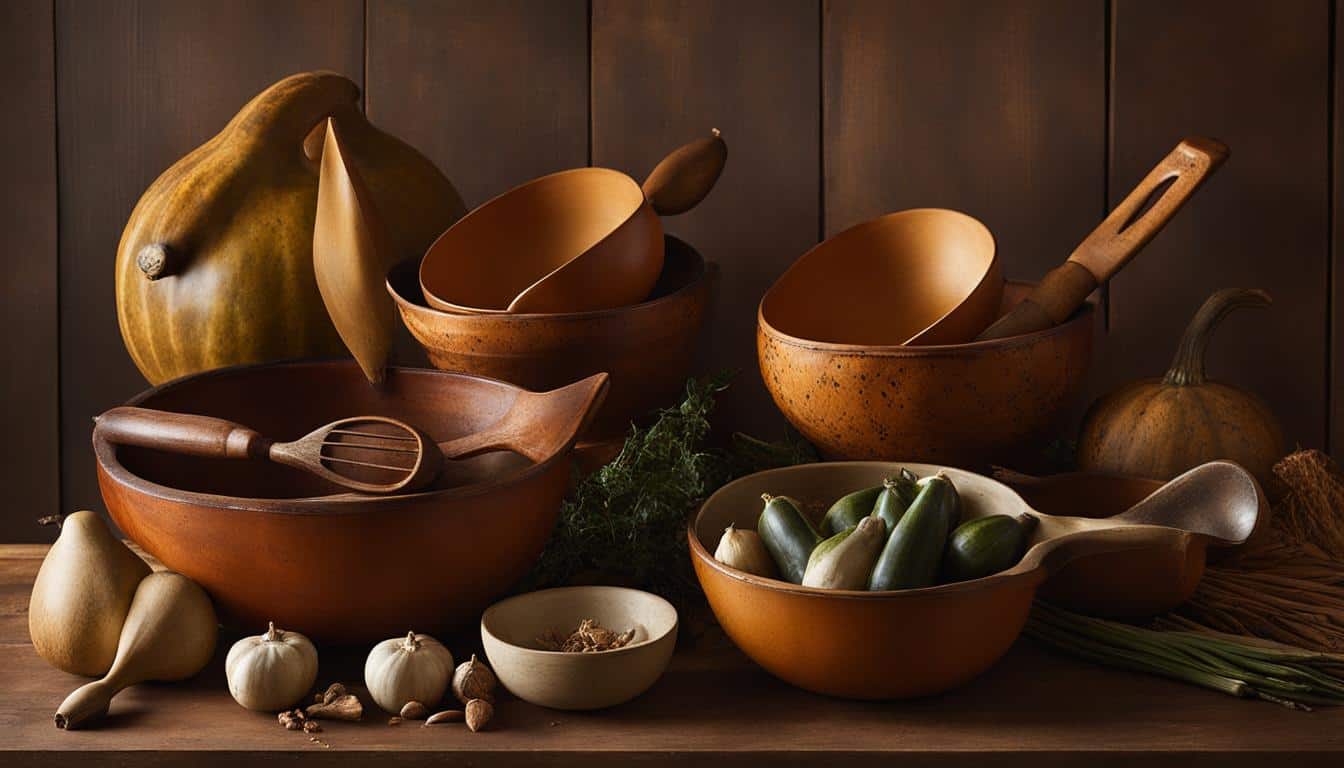
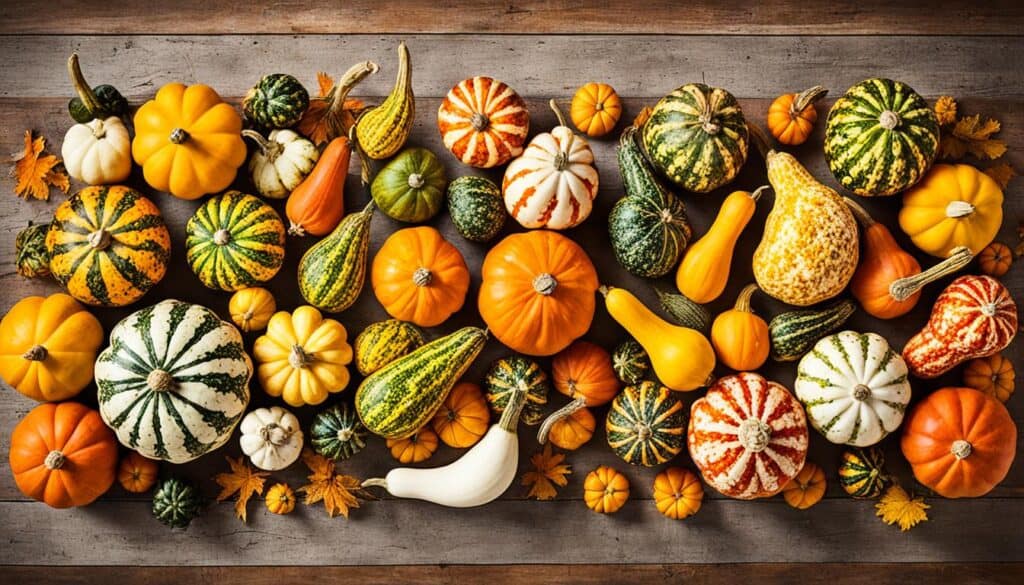
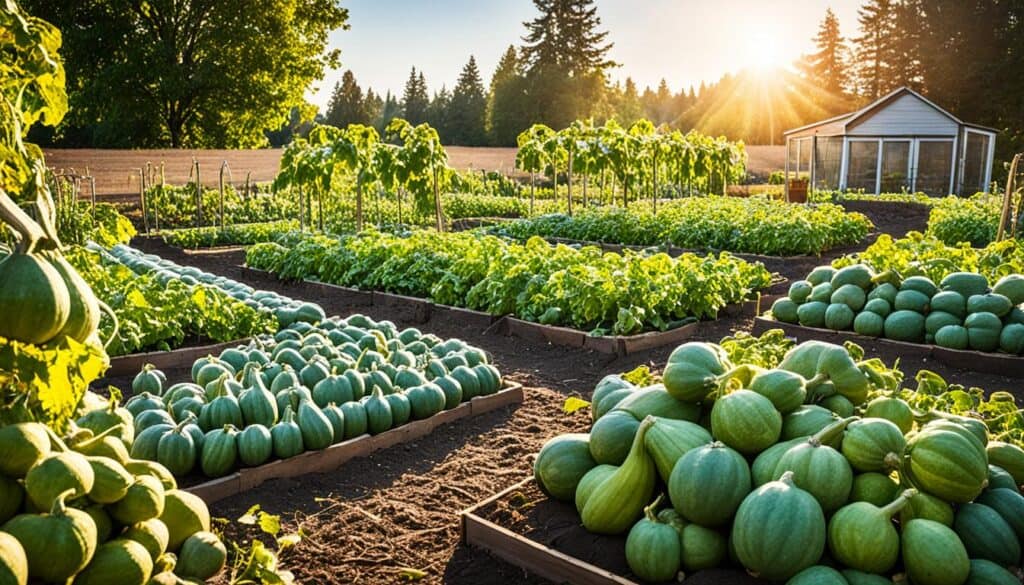

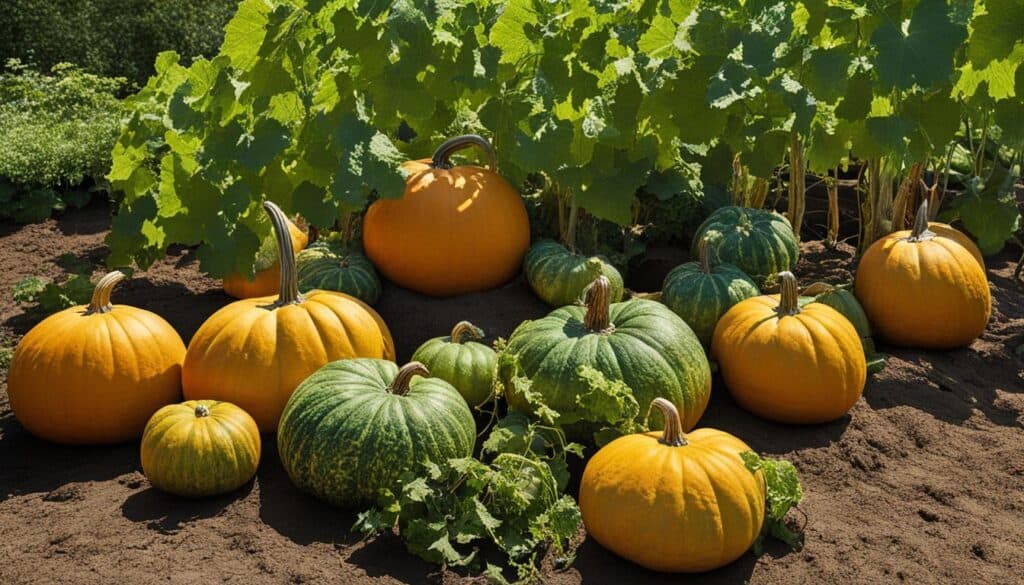
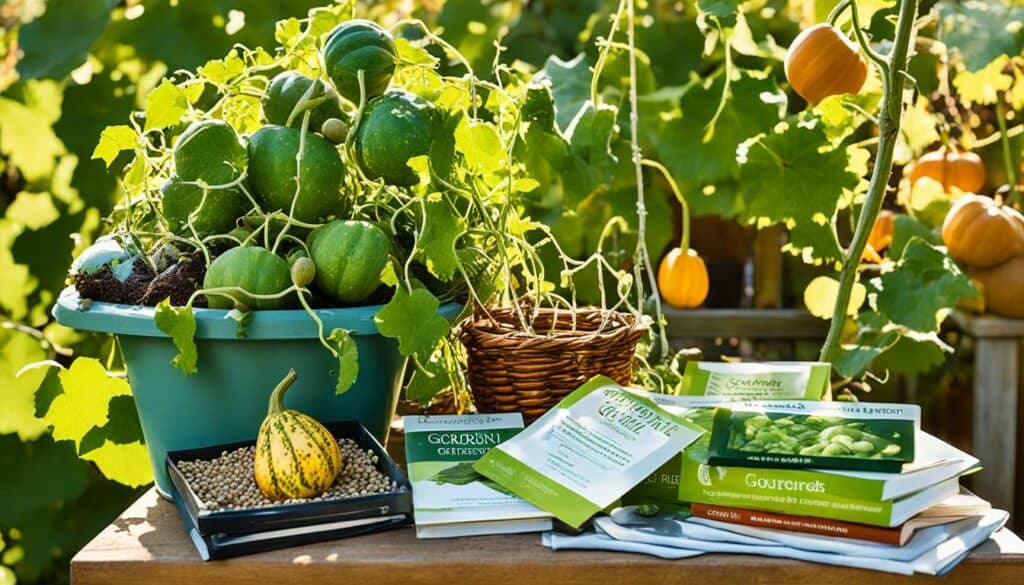



Leave a Reply